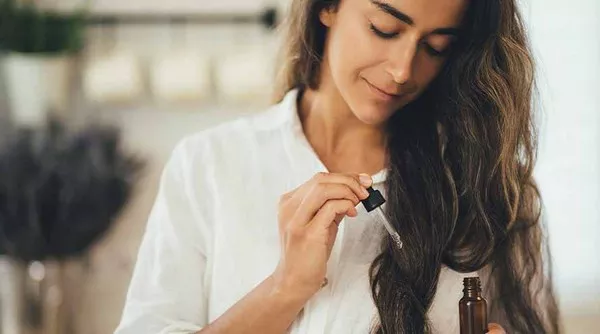Natural hair is a beautiful and versatile asset, but it requires a unique approach to care and maintenance. Whether you have curly, wavy, or coily hair, embracing your natural texture can lead to healthier and more vibrant locks. In this article, we’ll explore some essential tips for natural hair care to help you achieve your hair goals.
1. Understand Your Hair Type
The first step in caring for natural hair is understanding your hair type. Hair textures can vary widely, from loose waves to tight coils, and each type has its unique needs. Determine your hair’s porosity, density, and curl pattern to tailor your routine accordingly. Knowing your hair type will help you choose the right products and techniques.
2. Gentle Cleansing
When washing natural hair, opt for sulfate-free shampoos. Sulfates can strip the hair of its natural oils, leaving it dry and prone to breakage. Focus on cleansing your scalp and let the suds run down your strands as you rinse to prevent excessive dryness. Consider co-washing (using a conditioner to cleanse) in between regular shampoos to maintain moisture.
3. Moisturize, Moisturize, Moisturize
Moisture is key for natural hair. Afro-textured hair, in particular, tends to be dry, so it’s crucial to keep it well-hydrated. Use a leave-in conditioner or hydrating cream to lock in moisture after washing. You can also employ the L.O.C. (Liquid, Oil, Cream) or L.C.O. (Liquid, Cream, Oil) method to seal in moisture effectively.
4. Avoid Heat Styling
Limit the use of heat styling tools such as flat irons and curling wands. Excessive heat can cause damage and weaken your natural curl pattern. If you must use heat, use a heat protectant spray and keep the temperature moderate. Embrace protective styles like braids, twists, or bantu knots to give your hair a break from heat.
5. Trim Regularly
Regular trims are essential for maintaining the health of your natural hair. Trimming every 8-12 weeks helps get rid of split ends and prevents them from traveling up the hair shaft, causing more significant damage. Trimming encourages healthy growth and maintains the shape of your hairstyle.
6. Protective Styling
Protective styles like box braids, twists, and buns can help preserve your natural hair’s moisture and minimize manipulation. They shield your hair from environmental stressors and reduce the risk of breakage. However, ensure not to make these styles too tight, as it can lead to hair loss and damage.
7. Satin or Silk Pillowcases
Switching to satin or silk pillowcases can do wonders for your natural hair. Unlike cotton pillowcases, which can cause friction and lead to breakage, satin or silk reduces friction, helping to maintain your hair’s moisture and shine. It’s a simple change that can make a significant difference.
8. Embrace the “Pineapple” Technique
The pineapple technique involves loosely gathering your hair at the top of your head and securing it with a satin scrunchie or hair tie before bed. This helps preserve your curls and reduces friction against the pillow, preventing frizz and tangling.
9. Natural Oils
Incorporate natural oils into your hair care routine. Some oils, like coconut oil and jojoba oil, can help with moisture retention and add shine. Use them sparingly and focus on the ends of your hair to avoid weighing down your curls.
10. Patience and Persistence
Embracing your natural hair is a journey that requires patience. It may take time to find the right products and techniques that work best for your hair type. Be persistent and open to experimenting until you discover what brings out the best in your natural locks.
FAQs on Natural Hair Care
1. How often should I wash my natural hair?
The frequency of washing natural hair varies from person to person and depends on factors like hair type and lifestyle. Generally, washing every 1-2 weeks or as needed to maintain cleanliness and moisture is recommended.
2. Can I use regular hair products on natural hair?
While some regular hair products may work for natural hair, it’s often best to use products specifically formulated for natural and textured hair. These products are designed to provide the moisture and care that natural hair needs.
3. What can I do to combat shrinkage in my natural curls?
Shrinkage is a natural characteristic of curly and coily hair. To minimize it, try stretching techniques like twist-outs, braid-outs, or banding. You can also use a hair diffuser when drying to elongate your curls.
4. Is it necessary to deep condition natural hair?
Deep conditioning is highly beneficial for natural hair, as it provides intense moisture and helps maintain hair health. Aim to deep condition your hair every 1-2 weeks or as needed.
5. How can I prevent frizz in my natural hair?
To prevent frizz, use anti-frizz products, avoid excessive touching and manipulation, and sleep with a satin or silk pillowcase. You can also apply a small amount of oil or leave-in conditioner to seal in moisture and reduce frizz.
6. What should I do if my natural hair is breaking or thinning?
If you experience excessive hair breakage or thinning, consult a professional hairstylist or dermatologist. They can assess the condition of your hair and scalp and recommend appropriate treatments or solutions.
7. Can I color my natural hair?
Yes, you can color your natural hair, but it’s essential to use a professional stylist who specializes in natural hair to minimize damage. Opt for ammonia-free or low-ammonia hair dyes and ensure proper aftercare to maintain your hair’s health and vibrancy.

